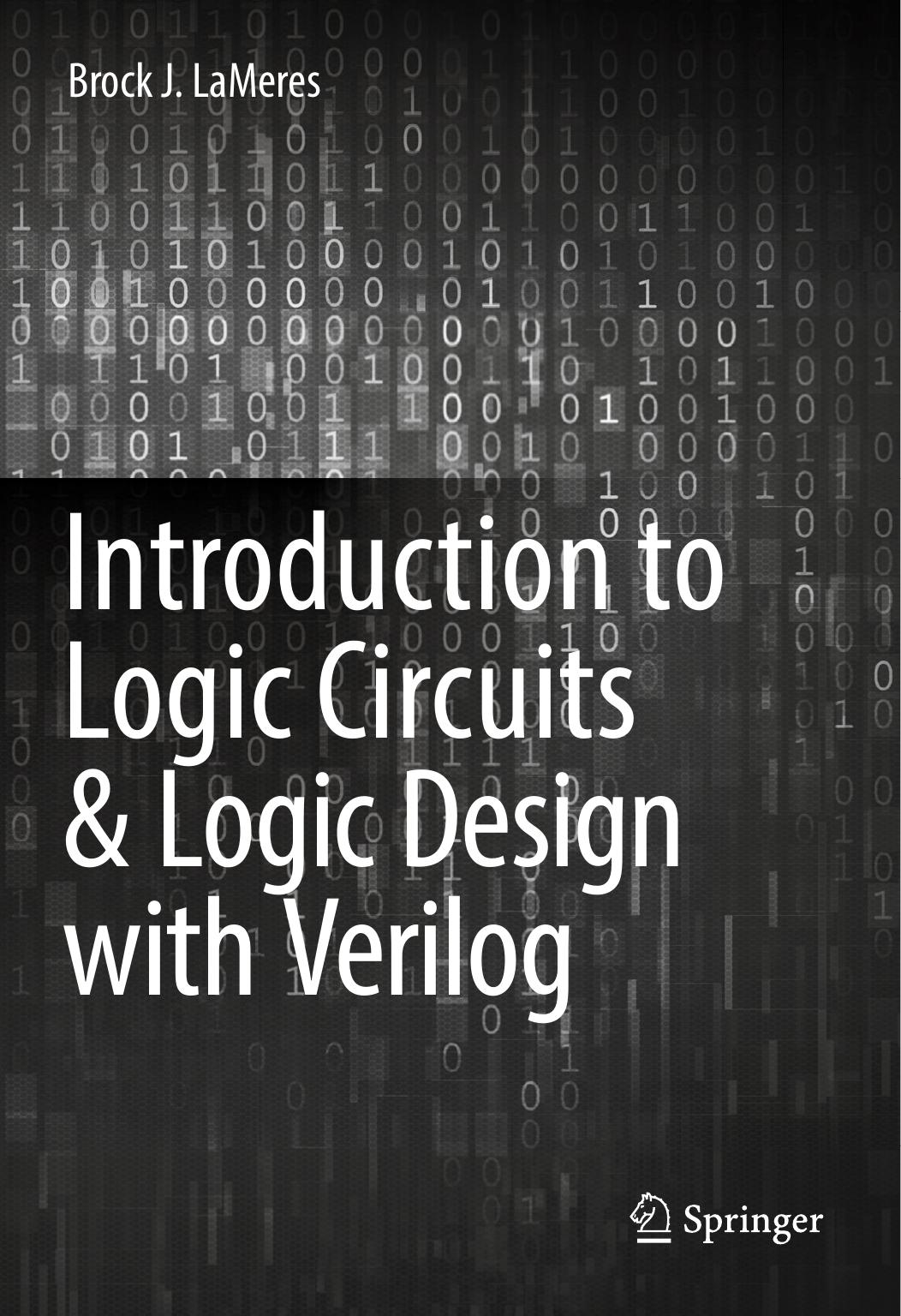Introduction to Logic Circuits & Logic Design with Verilog by Brock J. LaMeres

Author:Brock J. LaMeres
Language: eng
Format: epub, pdf
Publisher: Springer International Publishing
A possible solution to eliminate this switch bounce is to instead use a SPDT switch in conjunction with a sequential storage device. Before looking at this solution, we need to examine an additional condition introduced by the SPDT switch. The SPDT switch has what is known as break-before-make behavior. The term break is used to describe when a switch is open while the term make is used to describe when the switch is closed. When a SPDT switch is pressed, the input will be floating during the time when the free-moving contact is transitioning toward the destination contact. During this time, the output of the switch is unknown and can cause unwanted logic transitions if it is being used to drive the input of a logic gate.
Let’s look at switch bounce when using a SPDT switch without additional circuitry to handle bouncing. A SPDT has two positions that the free-moving contact can make a connection to (i.e., double throw). When using this switch to drive a logic level into a gate, one position is configured as a logic HIGH and the other a logic LOW. Consider the SPDT switch configuration in Fig. 7.26. Position 1 of the SPDT switch is connected to GND, while position 2 is connect to VCC. When unpressed the switch is in position 1. When pressed, the free-moving contact will transition from position 1 to 2. During the transition the free-moving contact is floating. This creates a condition where the input to the gate (SW) is unknown. This floating input will cause unpredictable behavior on the output of the gate. Upon reaching position 2, the free-moving contact will bounce off of the destination contact. This will cause the input of the logic gate to toggle between a logic HIGH and floating repeatedly until the free-moving contact comes to rest in position 2.
Fig. 7.26Switch bouncing in a single pole, double throw switch
Download
Introduction to Logic Circuits & Logic Design with Verilog by Brock J. LaMeres.pdf
This site does not store any files on its server. We only index and link to content provided by other sites. Please contact the content providers to delete copyright contents if any and email us, we'll remove relevant links or contents immediately.
| Automotive | Engineering |
| Transportation |
Whiskies Galore by Ian Buxton(41880)
Introduction to Aircraft Design (Cambridge Aerospace Series) by John P. Fielding(33064)
Small Unmanned Fixed-wing Aircraft Design by Andrew J. Keane Andras Sobester James P. Scanlan & András Sóbester & James P. Scanlan(32743)
Craft Beer for the Homebrewer by Michael Agnew(18140)
Turbulence by E. J. Noyes(7936)
The Complete Stick Figure Physics Tutorials by Allen Sarah(7307)
Kaplan MCAT General Chemistry Review by Kaplan(6867)
The Thirst by Nesbo Jo(6828)
Bad Blood by John Carreyrou(6552)
Modelling of Convective Heat and Mass Transfer in Rotating Flows by Igor V. Shevchuk(6391)
Learning SQL by Alan Beaulieu(6211)
Weapons of Math Destruction by Cathy O'Neil(6146)
Man-made Catastrophes and Risk Information Concealment by Dmitry Chernov & Didier Sornette(5921)
Digital Minimalism by Cal Newport;(5664)
Life 3.0: Being Human in the Age of Artificial Intelligence by Tegmark Max(5474)
iGen by Jean M. Twenge(5366)
Secrets of Antigravity Propulsion: Tesla, UFOs, and Classified Aerospace Technology by Ph.D. Paul A. Laviolette(5309)
Design of Trajectory Optimization Approach for Space Maneuver Vehicle Skip Entry Problems by Runqi Chai & Al Savvaris & Antonios Tsourdos & Senchun Chai(5011)
Pale Blue Dot by Carl Sagan(4912)
